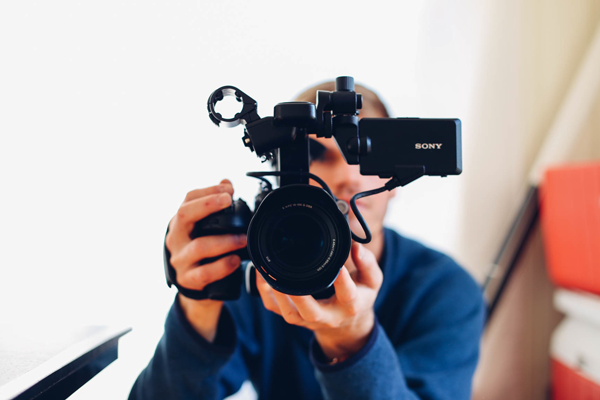
Breaking and Ignoring the 4th Wall: What’s the Difference?
The fourth wall is a term for the imaginary wall that exists between stage and audience. It originated in theater, but applies just as well to the screen/camera in film and video. The fourth wall is a term designed for use in fiction and in this context it can quickly become a complicated mess. Let’s keep things in this blog to branding, marketing, and non-fiction. In the world of business, video must be established early and then left alone. Let’s explore the few and stringent options you have available for your business video and I promise to explain why there is little room for creativity in this area.
Method 1: Classic Fly on the Wall

The audience sees and hears everything that is happening, but the subjects on screen do not acknowledge them. This is by far the most popular way to tell a story and business videos and marketing pieces are no exception. At Orbit Design we believe the best way to employ this method is in an interview style with the interviewer off-screen and the interviewee doing 100% of the speaking and directing his or her attention slightly away from the camera. The main reason this method works is that audiences have come to expect it. They have been put into a comfortable place and are now ready to soak up information. In order to maintain this level of comfort, the subject on screen can never make eye contact with the camera for even a moment. Also, he or she can only address the audience as “our customers” and never in the second person or “you”. These terms can be used in methods two and three, but it is important to NEVER mix the methods.
Method 2: The Off-screen Narrator

A voice-over narrator speaks directly to the audience. Once again, this is a trope that the viewer will immediately recognize and feel comfortable with. This is a common setup for a TV commercial and is also used in movies and shows. The important thing to remember here is that the narrator must stay off-screen. It is extremely uncommon in popular fiction for the omniscient narrator to suddenly appear onscreen and continue to address the audience directly. For the audience, this is jarring and will distract from the message of the video.
Method 3: The Vlogger/ YouTube Tutorial

Let it be known right off the bat that this method is only to be used for a very specific situation. The video blogger has the ability to talk directly to his or her audience just as a friend on a video chat would. The big issue with this method is that it MUST be casual and it MUST be genuine. The audience will immediately detect and detest and smell of sell in these videos. The meat of what you are offering must be in the video itself. It is impossible to manufacture sincerity in these videos, so don’t even try it.
The big takeaway from all three methods is keeping your viewer in their comfort zone. Ideally your customer won’t even consider any of the above when watching your videos. In the business world, the fourth wall should always be seamless and invisible.

Ignored 4th Wall (Subjects ignore the camera) Broken 4 Wall (Subjects acknowledge camera, audience)


0 Comments